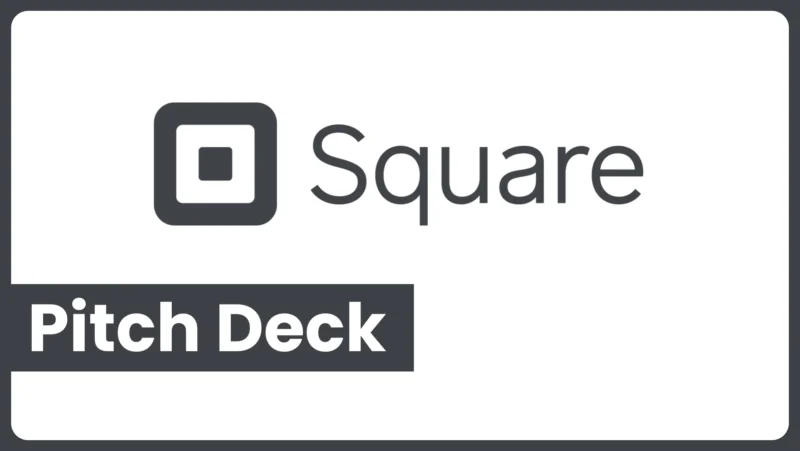Let’s be honest. The LinkedIn business journey is an inspirational one. They went from being nothing to being owned by Microsoft. Along this journey, they had many pitch decks. We are here to analyze the LinkedIn Series B Pitch Deck that raised over $10 million.
Let’s do this!
The LinkedIn Pitch Deck
LinkedIn raised over $158 million before getting acquired by Microsoft. So this deck was during the final stages of the private company before it became part of something bigger. There’s definitely a lot to learn, so let’s dig into it.
Oh, first of all, if you’re looking for a PDF version of the pitch deck. Here it is:
Alternatively, here’s a detailed analysis of what you’re about to see.
Slides 1-3: Cover and Problem
They start off by showcasing LinkedIn. It was 2004. So, they immediately started with their elevator pitch after their cover page. They referred to it as Professional People Search 2.0. They wanted to convey that it is a disruptive concept. The whole pitch deck revolves around explaining what “Profesisonal People Search 2.0” is.
Finally, they state the problem they’re trying to solve is that there isn’t a platform that connects professionals in an effective way.
Now that you think about it, after all these years, LinkedIn did turn out to be the perfect professional network that they were talking about. Their growth shows this more than anything.

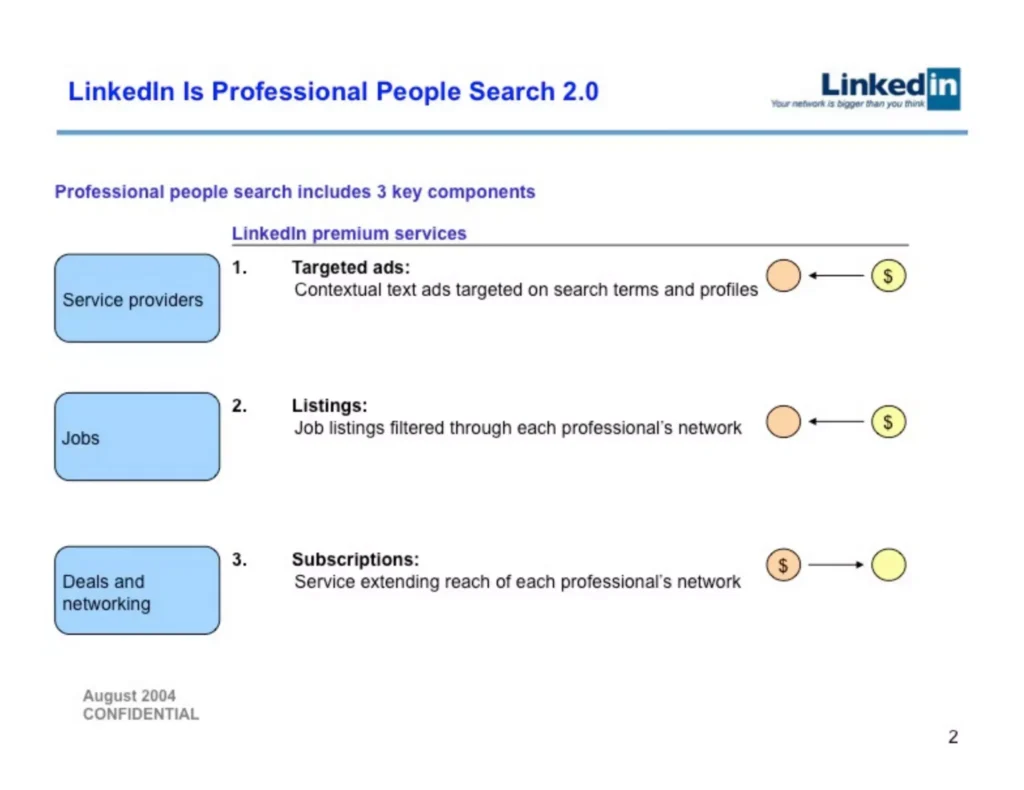

Slides 4-9: Examples To Pitch LinkedIn
Moving on, they started to metaphorically explain to the reader what LinkedIn is or what “Professional People Search 2.0” is. They’ve taken examples from eBay’s disruption of online goods listing as well as Paypal and Google. Then they explained what they are as a comparison. Years later, Coinbase, with their pitch deck, used the same tactic by metaphorically explaining what they are to bitcoin.



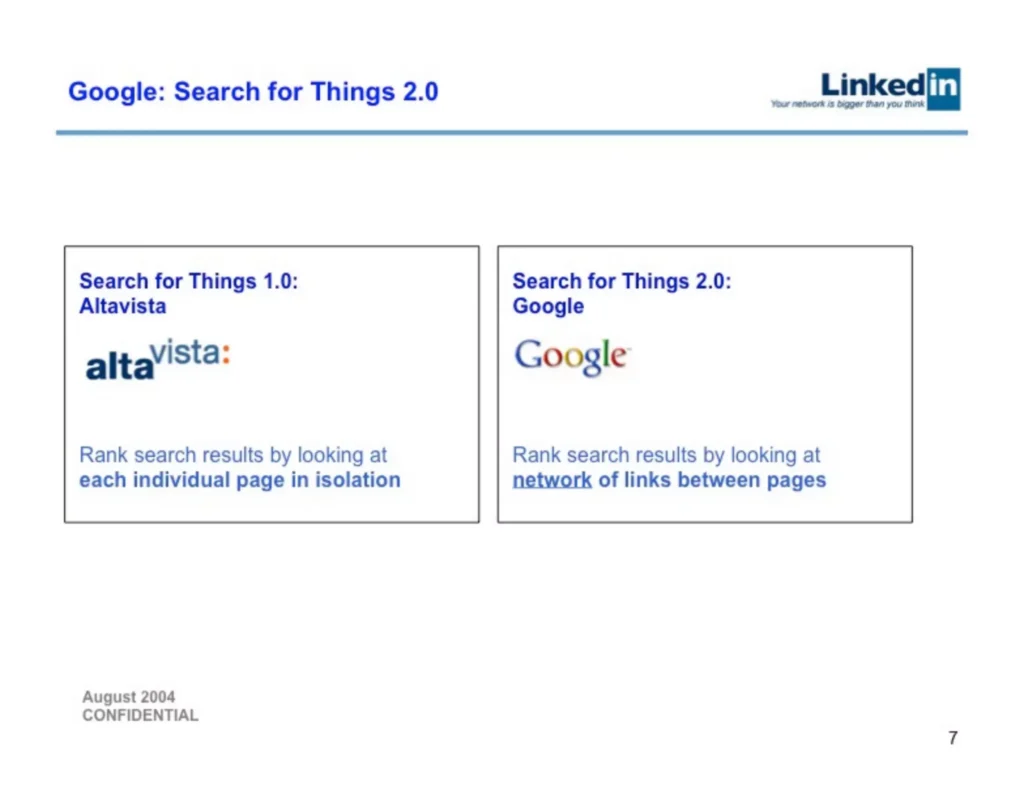

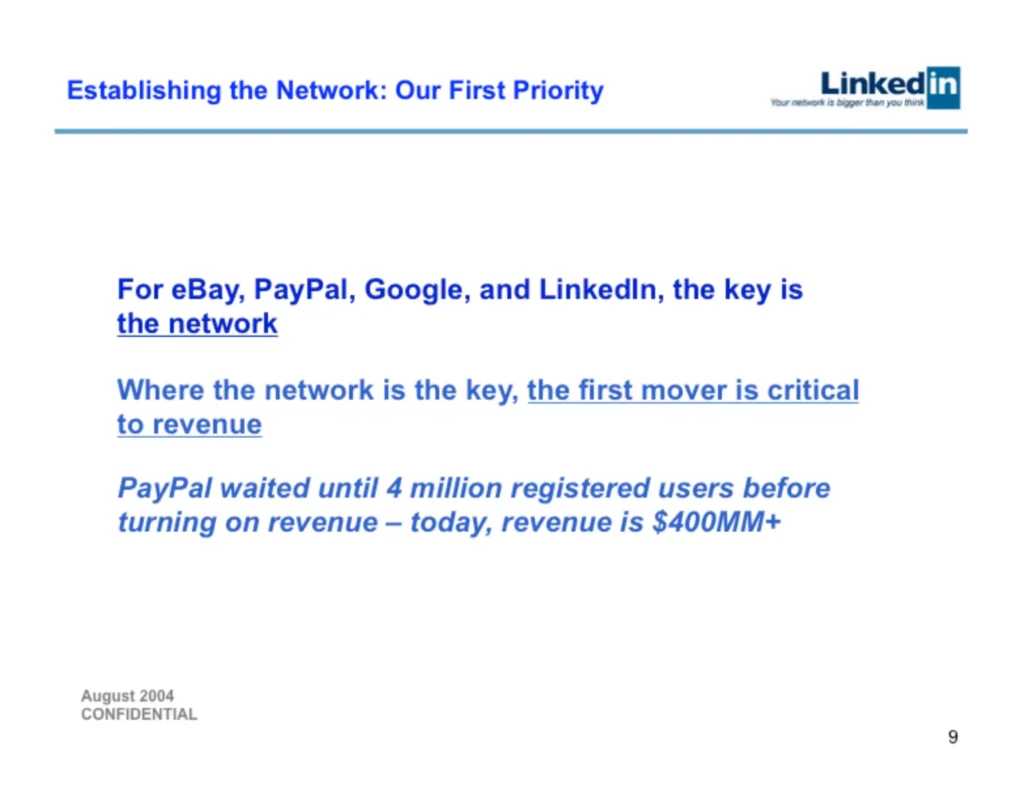
Slides 10-13: Traction
Now that the product is explained, more or less. It’s time to show traction. Remember, this is not a seed funding pitch deck. It’s a series B. Hence, they have to show some of their muscles. They had a lot of those at that stage. Their growth was almost resembling a hockey stick curve, which explains the Microsoft acquisition of more than $26 billion.
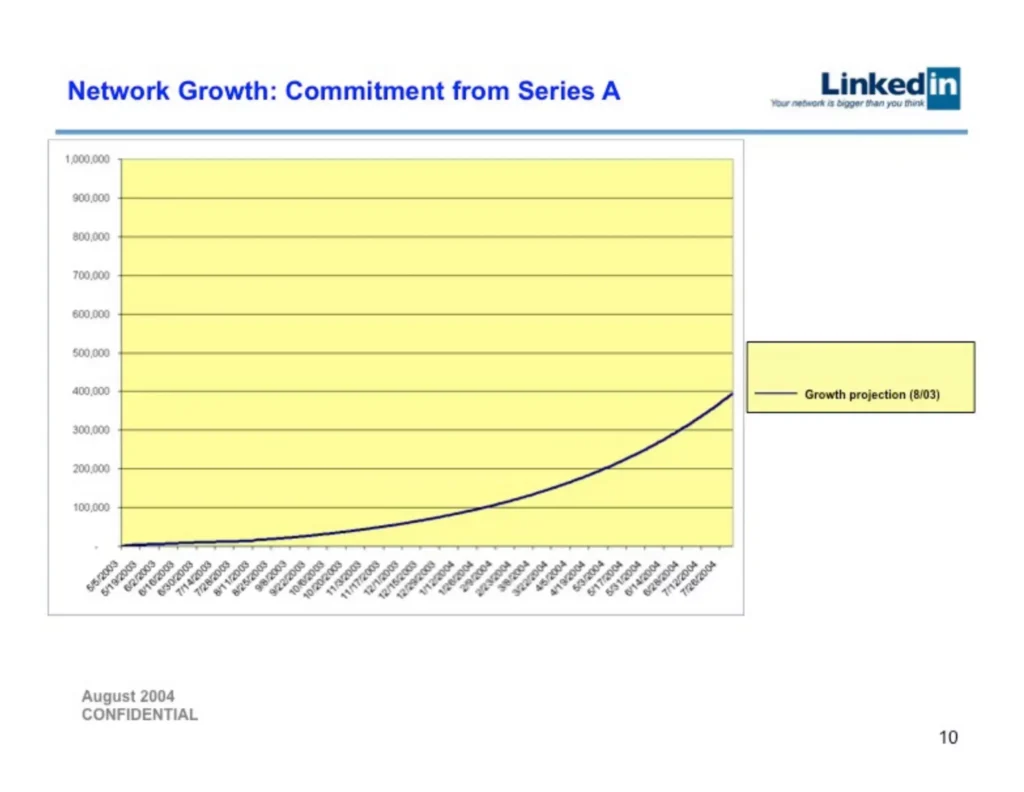
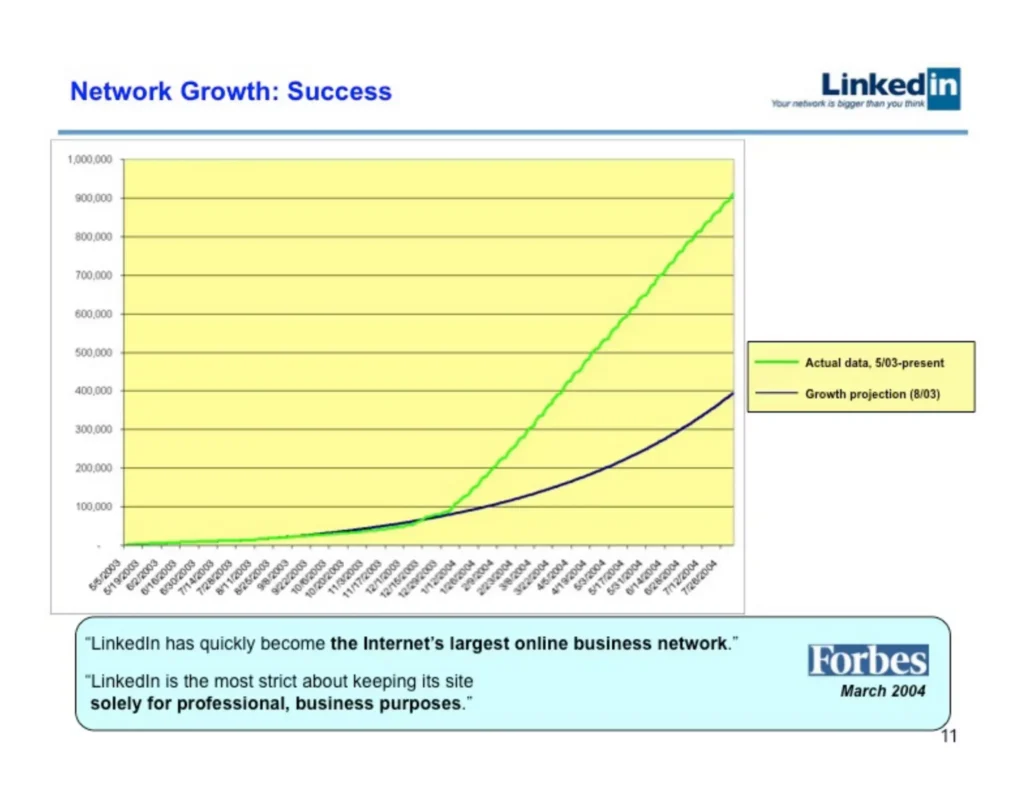

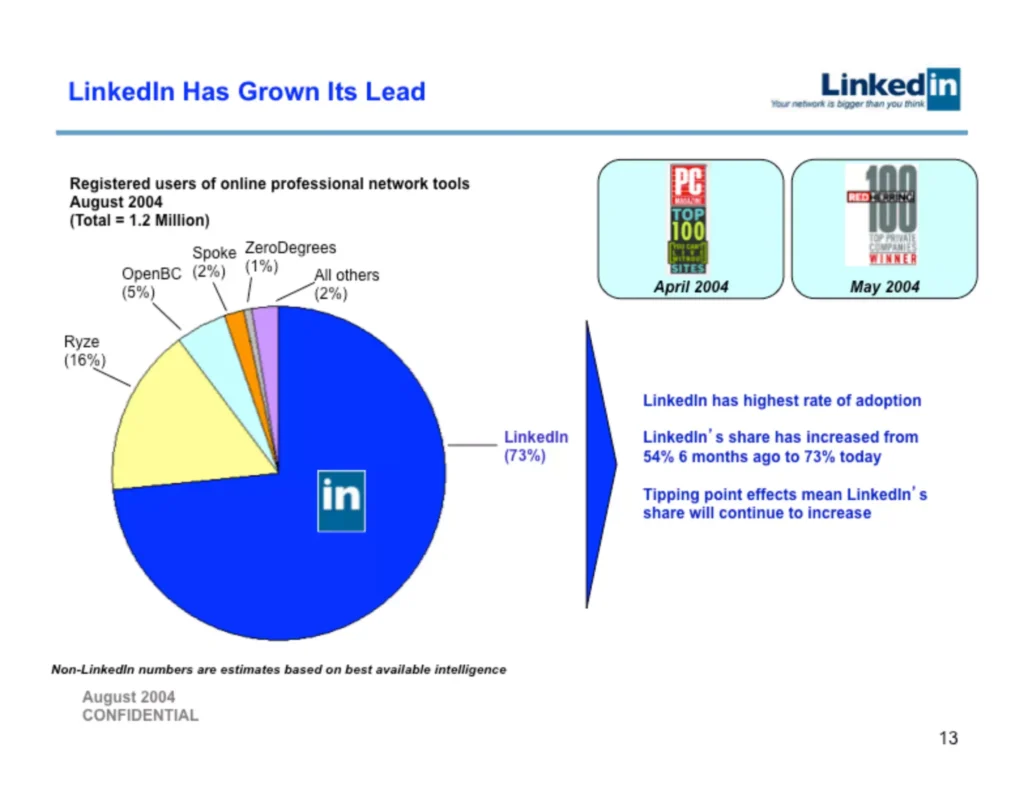
Slides 14-15: Competitive Analysis
Then they started showcasing that they were here for the very long term (which proved to be very correct.)
There are no direct competitors to LinkedIn as of this moment. It is the most professional network that exists nowadays.
They had to deeply show that they knew who the competitors were and what they were doing differently.


Slides 16-17: Further Traction
Then they started flexing more muscles. They showcased that their growth did not have a large amount of funding behind it. Additionally, they started showing what the brand of LinkedIn means to people right now.


Slides 18-20: Unique Selling Point
To add more credibility to the previous point, they started showing their unique selling points and why they’re market leaders. Additionally, they wanted to convey why there won’t be a Snapchat that comes around and dominates the market in a few months. They also started explaining the business model in the same metaphorical method they explained their product in.



Slides 21-29: Business Model
Then they finalize their conversation about what their business model is as well as their market opportunity. It’s critical to showcase that the market is growing when it comes to the job search tech revolution. This was one of the biggest selling points when it came to why they remained a market leader for a long time. The market was growing.









Slides 30-33: Projections and Raise
The readers at this stage will start wondering about the future of LinkedIn. Hence, the upcoming slides showcase what their milestones are for this fundraising round as well as some initial projections of what they’re expecting to achieve in terms of numbers.


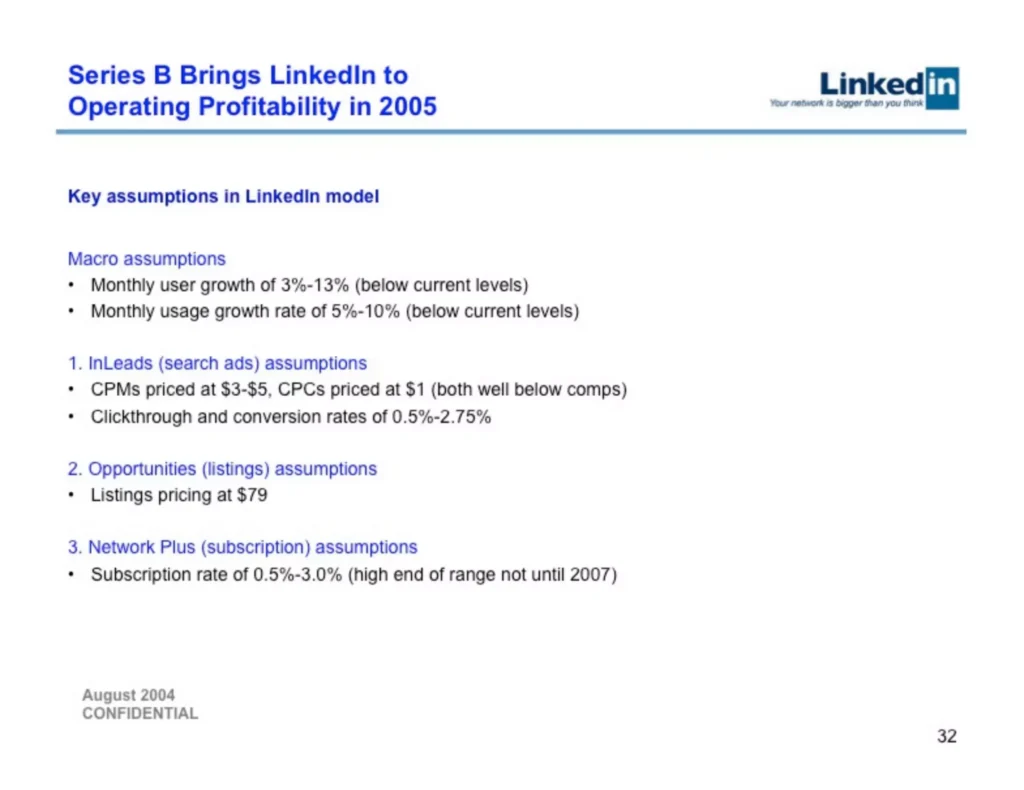

Slides 34-35: Team
Finally, they showcase their team and board members to make it clear that they have very strong professionals in place who knew what they’re doing for a very long time.


Slides 36-37: Take home message of the LinkedIn Pitch Deck
Then they end the deck with a take-home message of what LinkedIn is. It’s an investment opportunity that should not be skipped.
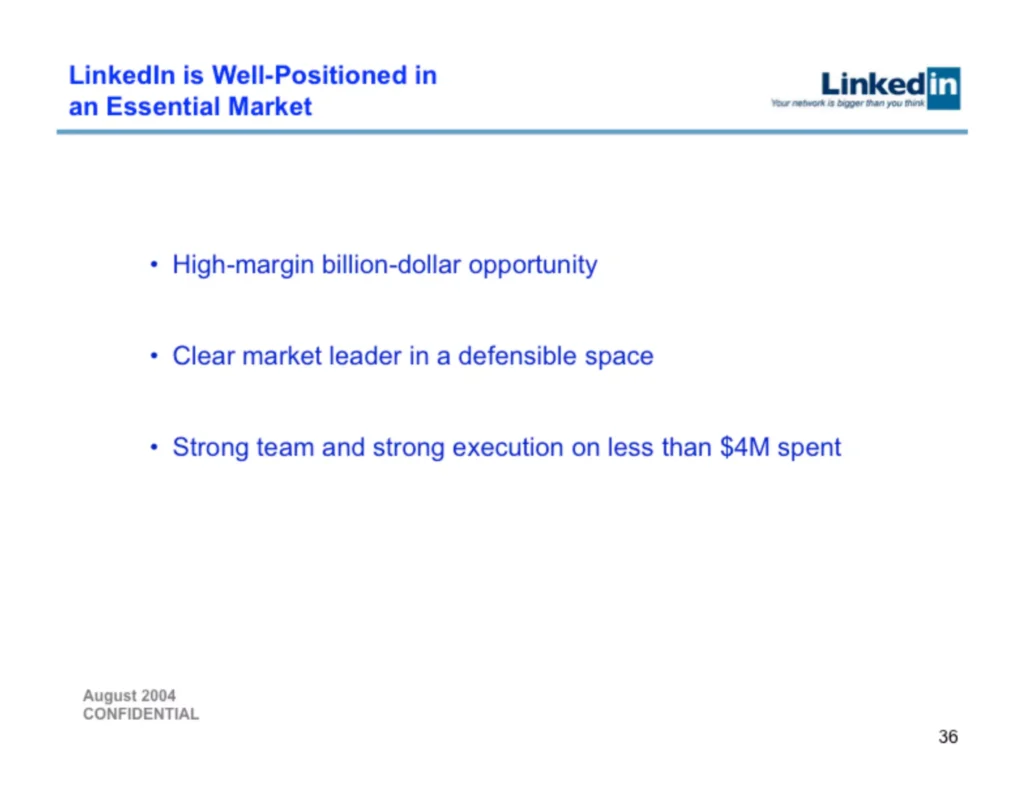

Conclusion of The LinkedIn Pitch Deck Analysis
The deck says traction and professional. You should expect that from a platform that focuses on connecting professionals. Their metaphorical comparisons with other industries are entertaining and smart to pitch. It creates a sense of urgency in the investors so that they wouldn’t be missing on the next eBay.
Meet The Author Of This Article

I’m Al Anany, the founder and CEO of Albusi.
Pitch decks are quite enjoyable. They tell a story in only a few images and lines of text. How could you not love them? I’ve been reading decks for over ten years. Each and every deck is similar to watching a new enjoyable documentary.





